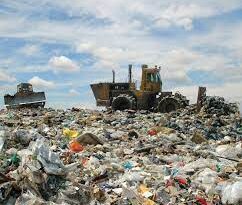Concept, Practice and Socio-economic Role of Occupational Hygiene
Occupational hygiene takes care of activities such as food production, extraction of raw materials, manufacturing of goods, energy production which can, to a greater or lesser extent, create hazards to the health of workers and those in nearby communities, as well as to the general environment.
The word hygiene is derived from the name of the Greek goddess of health known as Hygeia. She was the daughter of Asklepios and sister to Panacea. While her father and sister were connected with the treatment of existing disease Hygeia was regarded as being concerned with the preservation of good health and the prevention of disease (IOHA, 2006).
However, the generation and release of harmful agents in the work environment can be prevented, through adequate hazard control interventions, which not only protect workers’ health but also limit the damage to the environment often associated with industrialization.
If a harmful chemical is eliminated from a work process, it will neither affect the workers nor go beyond, to pollute the environment (Encyclopedia of Occupational Health and Safety, 1998).
Concept of Occupational Hygiene
In the World Health Organisation (WHO) Declaration on occupational health for all, the preamble reads: “The Second Meeting of the WHO Collaborating Centers in Occupational Health, which was held in Beijing, People’s Republic of China, II-14 October 1994, discussed and adopted a proposal for a WHO Global Strategy for ‘Occupational Health for All’.
In adopting the strategy, the meeting recognized the urgent need to develop occupational health at a time when rapid changes in working life are affecting both the health of workers and the health of the environment in all countries of the world. The meeting also adopted a proposal for action aimed at implementation of the strategy” (WHO, 1994).
Definition
IOHA (2006) defines Occupational as the discipline of anticipating, recognising, evaluating and controlling health hazards in the working environment with the objective of protecting worker health and well- being and safeguarding the community at large.
Occupational Hygiene has also been defined as the practice of identifying of hazardous agents; chemical, physical and biological; in the workplace that could cause disease or discomfort, evaluating the extent of the risk due to exposure to these hazardous agents, and the control of those risks to prevent ill-health in the long or short term.
The British Occupational Hygiene Society (BOHS) defines that “occupational hygiene is about the prevention of ill-health from work, through recognizing, evaluating and controlling the risks” (BOHS, 2009).
According to Wikipedia, The profession of occupational hygiene uses strict and rigorous scientific methodology and often requires professional judgment based on experience and education in determining the potential for hazardous exposure risks in workplace and environmental studies.
The Practice of Occupational Hygiene
According to the Encyclopedia of Occupational Health and Safety (1998), the classical steps in occupational hygiene practice are as follows:
The recognition of the possible health hazards in the work environment
The evaluation of hazards, which is the process of assessing exposure and reaching conclusions as to the level of risk to human health
Prevention and control of hazards, which is the process of developing and implementing strategies to eliminate, or reduce to acceptable levels, the occurrence of harmful agents and factors in the workplace, while also accounting for environmental protection.
The ideal approach to hazard prevention is “anticipated and integrated preventive action”, which should include:
Occupational health and environmental impact assessments, prior to the design and installation of any new workplace
Selection of the safest, least hazardous and least polluting technology (“cleaner production”).
Environmentally appropriate location: proper design, with adequate layout and appropriate control technology, including for the safe handling and disposal of the resulting effluents and waste
Elaboration of guidelines and regulations for training on the correct operation of processes, including on safe work practices, maintenance and emergency procedures.
Read Also : Factors Influencing Soil Moisture
The Socio-economic Role of Occupational Hygiene
According to Wikipedia, the profession of Occupational hygiene have been involved in time past with changing the perception of society about the nature and extent of hazards and preventing exposures in the workplace and communities.

Many occupational hygienists work day- to-day with industrial situations that require control or improvement to the workplace situation.
Many of these issues have required the coordination over a number of years of a number of medical and para professionals in detecting and then characterizing the nature of the issue, both in terms of the hazard and in terms of the risk to the workplace and ultimately to society.
The Difference between Industrial Safety and Industrial Hygiene
Industrial hygiene is concerned with identifying, analyzing, and controlling the stressors in a work environment that could lead to injury, illness, or impairment.
These stressors can be physical, chemical, biological, ergonomic, or psychosocial in nature and can range from noise levels and temperature extremes to radiation and repetitive motions.
Industrial hygienists use rigorous scientific methodology to identify potential hazards and evaluate the level or risk and exposure.
Industrial safety, on the other hand, refers to the policies and plans that organizations put in place to meet the challenges identified by industrial hygienists.
These include general safety concerns common to all workers, specific concerns relevant to the industry, safety aspects associated with the process and production process, and building and structural safety.
Employers must ensure that all relevant laws, regulations, and stipulations are adhered to in order to minimize safety concerns for employees (Safeopedia, 2019).
In summary, occupational hygiene takes care of activities such as food production, extraction of raw materials, manufacturing of goods, energy production which can, to a greater or lesser extent, create hazards to the health of workers and those in nearby communities, as well as to the general environment.
Read Also : The Different Types of Manure and How they Work



